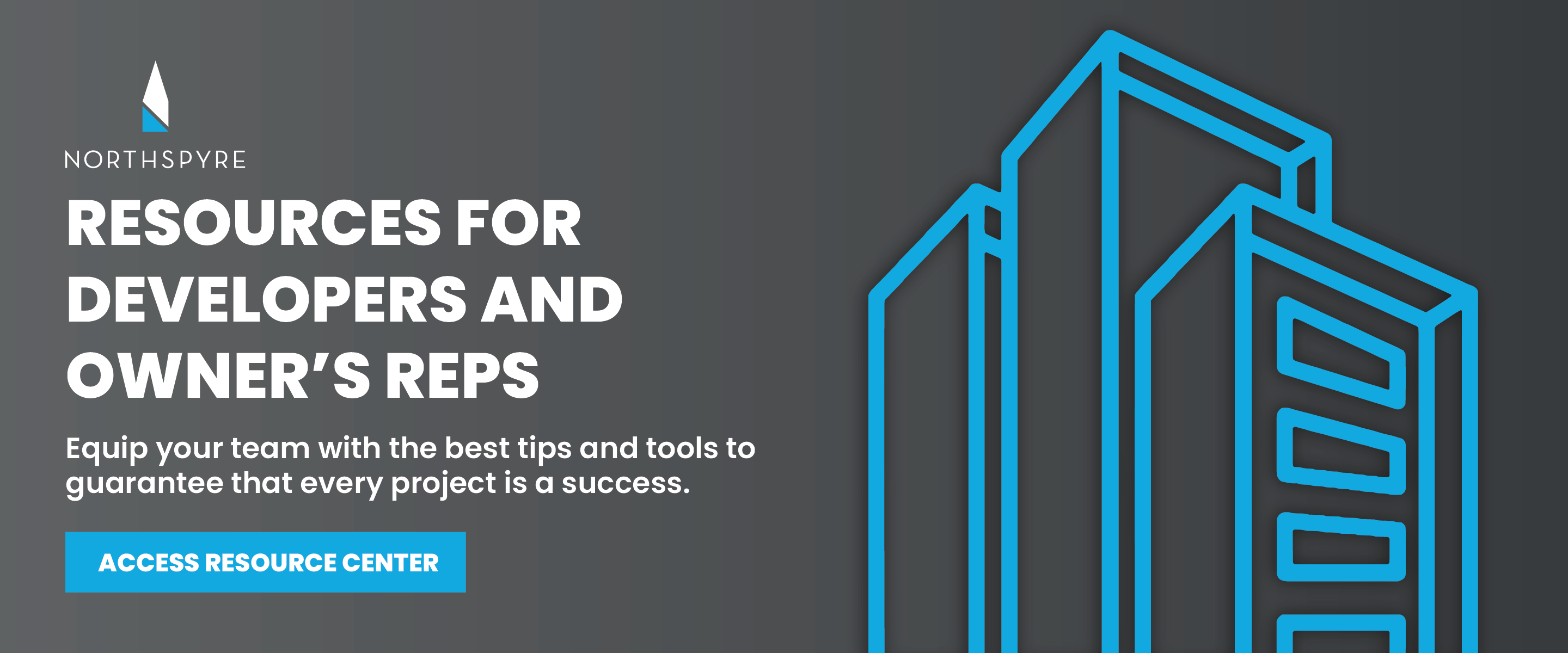5 Bright Spots for CRE Development During the Pandemic
The pandemic has certainly complicated commercial real estate investment, but it has far from halted new activity. Sophisticated developers have strategically adapted to the new market fundamentals to drive projects forward. These are the five ways developers are forging ahead during the pandemic.
Investing in Technology Infrastructure
This year, CRE technology adoption surged as real estate owners and developers looked to rapidly improve operational efficiency and cost savings. According to a survey from Deloitte, 82% of real estate companies believe the pandemic revealed shortcomings in technology infrastructure, and 43% of firms are increasing investment in technology. Even more impressive, another survey from EY and CRETECH found that 96% of real estate companies are investing in technology in some way, and 61% are now considering strategic technology adoption a high priority. Management tools and system automation are at the top of the list for adoption, but health and wellness technology and software that enhances communication with project stakeholders is also in high demand.
Leveraging Creative Capital Sources
Traditional lending markets tightened at the start of the pandemic—but there are still opportunities for developers to secure capital. Strong sponsors with quality deals—particularly for recession resilient properties like industrial and multifamily—have maintained easy access to capital. Outside of the top-tier deals, developers have diversified the capital stack with creative capital solutions. The Federal Historic Preservation Tax Incentives Program, which gives owners or developers a 20% federal tax credit for the substantial rehabilitation of a historic building, and LIHTC, which helps to subsidize both the acquisition and development of affordable housing, are popular public funding sources. For private capital, developers have partnered with social impact investors that are willing to take a lower return to invest in projects that will support community growth.
Focusing on Site Selection
Well-capitalized developers have strategically focused on development site selection and land acquisition during the pandemic. Fundamentals now favor industrial, multifamily and single-family properties and Sunbelt markets with population and job growth. While speculative office, retail and hotel developments have fallen out of popularity in the near-term, these sectors provide opportunities for developers to buy discounted or distressed properties that are ripe for redevelopment or new ground-up construction. Regional malls are particularly attractive to developers interested in distressed assets. They have the highest CMBS delinquency rate at 25%, and are good candidates for conversion to industrial warehouse or distribution properties—the darling investment assets of the pandemic.
Adapting to New Occupier Demands
Developers in the mid-to-late phases of construction are responding to new occupier needs. In the place of fitness centers and outdoor gathering spaces, occupiers now want amenities that promote health and wellness. Developers are expanding touchless surfaces beyond the restroom with foot-operated elevators, motion-operated lights and thermal temperature scanning devices, and they are installing HVAC systems with improved ventilation and increased outside airflow. Developers are also working closely with architects to infuse flexibility into new construction designs to accommodate social distancing requirements in the short-term and increased density in the long-term.
Adopting a Long-Term Outlook
Economic downturns happen. Experienced developers understand the business cycle and are prepared to make strategic adjustments while leveraging reserves to weather the storm. Developers with projects nearing delivery expect increased concessions and potentially lower rents for the next year, and many are changing their business strategy to account for a longer stabilization period and a potentially different exit strategy. The good news: new construction projects take years to bring to market. Most developers are confident that they will deliver into a recovery cycle with rapidly improving fundamentals as a vaccine is widely distributed and the pandemic subsides.

![[Resource Center] Access ebooks, infographics, whitepapers, videos and more, all tailored to aid real estate developers and owner's reps.](https://no-cache.hubspot.com/cta/default/4892644/d21bc8e4-89e0-46da-aec2-6a9868a21806.png)
